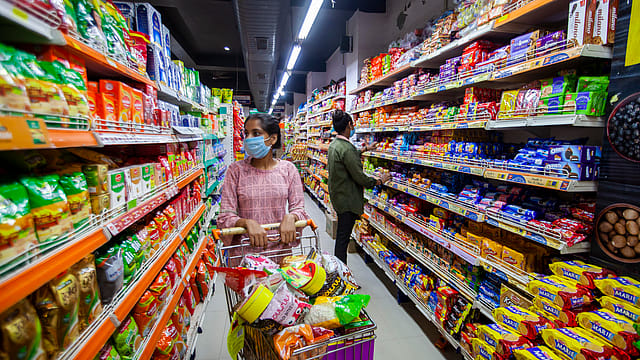FMCG revenues to grow 7-9% in this and next fiscal: CRISIL
ADVERTISEMENT

Revenue of the fast-moving consumer goods (FMCG) sector will grow 7-9% this fiscal compared with around 8.5% growth in the last, primarily driven by price hikes in the backdrop of rising input costs, according to CRISIL Ratings.
Volume growth, however, will be just 1-2% compared with 2.5% last fiscal, the ratings agency says.
"Next fiscal, too, the sector should see almost a similar pace of growth, but driven by volumes. That's because rural demand is expected to improve with inflation gradually beginning to moderate, even as urban demand will continue to remain steady," says CRISIL.
Operating margin will see a 100-150 basis points moderation to 18-19% this fiscal on higher input costs (primarily wheat, milk, maize, rice, crude derivatives) and rise in selling and marketing expenses, despite price hikes undertaken by FMCG players over the last 4-5 quarters, the ratings firm says.
However, softening in price of some raw materials, such as edible oil and sugar, will support profitability levels in the second half of the current fiscal, it adds.
"Next fiscal, operating margins should improve by 50-70 bps, considering better volume driven growth and coverage of costs, almost reaching pre-pandemic levels of around 20%," a CRISIL Ratings study of 76 FMCG companies accounting for around 35% of the ₹4.7 lakh crore annual revenue of the sector shows.
January 2026
Netflix, which has been in India for a decade, has successfully struck a balance between high-class premium content and pricing that attracts a range of customers. Find out how the U.S. streaming giant evolved in India, plus an exclusive interview with CEO Ted Sarandos. Also read about the Best Investments for 2026, and how rising growth and easing inflation will come in handy for finance minister Nirmala Sitharaman as she prepares Budget 2026.
"Similar to fiscal 2021, volume growth for the sector will remain subdued owing to sluggish rural demand (around 40% of overall FMCG demand) with inflation led price hikes of 7-8% over the past 12 months. On the other hand, urban demand is less impacted by inflationary pressures and will grow faster, led by increased direct-to-consumer (D2C) and sales through e-commerce channels," says Anuj Sethi, senior director, CRISIL Ratings.
Consumer preference is shifting to smaller pack sizes in both urban and rural areas, which too is weighing on volume growth, Sethi adds.
Next fiscal, higher minimum support prices for key crops and a good harvest should aid rural growth and help gradual recovery in rural demand, the ratings agency says. Besides, increased spends on rural infrastructure by the government, resulting in improved rural income levels, would also support growth. On the other hand, urban demand will remain steady next fiscal, supporting volume growth.
"The food and beverages segment, which constitutes around half of the sector's revenue, will grow 8-10% this fiscal, given their essential nature, and lower penetration in organized retail, compared to other segments. On the other hand, consumption of personal care and home care segments, which account for the balance half of the sector's revenues, will grow 6-8%, with consumer being discrete and also resorting to downtrading, owing to higher prices," says Aditya Jhaver, director, CRISIL Ratings.
Credit profiles of FMCG players are seen stable supported by healthy cash accruals, strong balance sheets with continuing low dependency on debt, and sizable liquid surpluses, says CRISIL.
